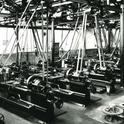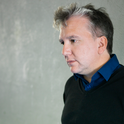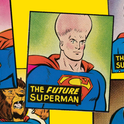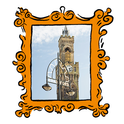I wish to announce a "realism" alert. Over the next few months, art critics and curators are likely to make widespread and irresponsible use of this abstract noun in an effort to describe the achievements of two artists separated by five centuries.
One of these is the sculptor Ron Mueck, a former model-maker linked to the Britart of the 1990s, who has a new exhibition running in Edinburgh's National Galleries of Scotland; the other is Hans Holbein, the 16th-century German artist who painted English courtiers. He is the subject of a blockbuster show, "Holbein in England," at Tate Britain in London, opening at the end of September.
Holbein brought a particularly dour version of the new realism of the northern Renaissance to England. The overwhelming majority of his surviving works are meticulous portraits of the court of Henry VIII. You can't see the flourish of the painter's brush in his images of the English governmental elite, as you can in his contemporary, Titian. Nor do his pictures contain the melodrama of his fellow German, Dürer. Instead there's a highly contemporary repetitiveness to the pose and lighting in his pictures that makes me think of the Dusseldorf school of photographers of the 1980s and 1990s. You have to imagine that in the 16th century there was only one photographer, the first ever, in all England—Holbein. His realism still looks realistic today, but it was a marvel in its own time. Portraits were a new genre of painting in the Renaissance—part of a new vision of a reality populated by important individuals. But Holbein's realism was not simply a snapshot of what someone looked like. His portraits also contain the finest representation of his subjects' velvet and ermine clothes, of animals, books and scientific instruments, as well as memento mori. Holbein both celebrated the existence of the individual and acknowledged that this existence was finite. That was 16th-century British realism.
Ron Mueck is best known for his hyperrealist sculpture Dead Dad, which caused a stir when it was exhibited at Saatchi's "Sensation" show in 1997. The work is an exact waxwork-like representation of his father, slightly shrunken in size, lying dead. It carries an uncanny echo of Holbein's gruesome painting of Dead Christ, an unusual image of Jesus lying in his sepulchre with a deadly pallor on his skin and his mouth wide open, which hangs in Basel. But between Holbein and Mueck, many other realisms have intervened. Advances in realism form the central unifying narrative in Giorgio Vasari's Lives of the Artists, Europe's first book of art history. For Vasari, each successive artist from Giotto onwards develops the art of perspective, the depiction of spatially receding landscapes, the modelling of figures and buildings, and later anatomy. These criteria define the first language of artistic realism. Following Vasari's lead, many lazy art historians went on to construct the entire history of art from Giotto to the eve of modernism as the story of art's triumphant conquest of the real. It's a simple-minded way of appreciating art that still exists today. The blurbs on the wall at last year's National Gallery's Caravaggio exhibition were still drawing our attention to the artist's "realism," by which they meant his depiction of violence, use of the poor and destitute as models in his paintings, and dramatic candlelight. There was little effort to describe what was "real" for Caravaggio and his contemporaries and why.
In the 19th century, realism became a self-description used by artists. Courbet led the French realist school. His famous paintings of toiling stone-breakers were realist because they depicted ordinary people rather than bombastic history and myth. And yet a feature of Courbet's realism was the superimposition of the compositions and moral grandstanding of history painting on to "ordinary" people. His realism was the idealisation of the working poor. By the end of the century, a series of remarkably unrealistic styles took over—modernism's various "isms"—and in the 1930s, photography took responsibility for realism with, for example, August Sander's brilliant but prosaic typologies of German society. It wasn't until the late 1960s that realism returned to art as photo-realism. Among the most memorable works of this movement were Duane Hanson's life-size and lifelike figures of average Americans—mall shoppers with trolleys, cleaning lady with bucket and mop, and tramp—that stand around in art galleries like real people in the wrong place.
Mueck owes much to the photorealists, but his difference is that he plays with scale. In his exhibition in Edinburgh you will see an enormous five-month-old baby, two miniaturised pensioners chatting on a pedestal, and another huge sculpture of a woman in bed. The public are fascinated by the realism of these sculptures, and collectors pay huge sums for them. So what does Mueck's XL-size realism say about our own age? Perhaps that, in the age of information, the photographic image is now larger than life. Or that, in a world of live news stand-ups, reality television and streaming internet sex shows, to get the sensation of the real we need to feel dwarfed by it.











